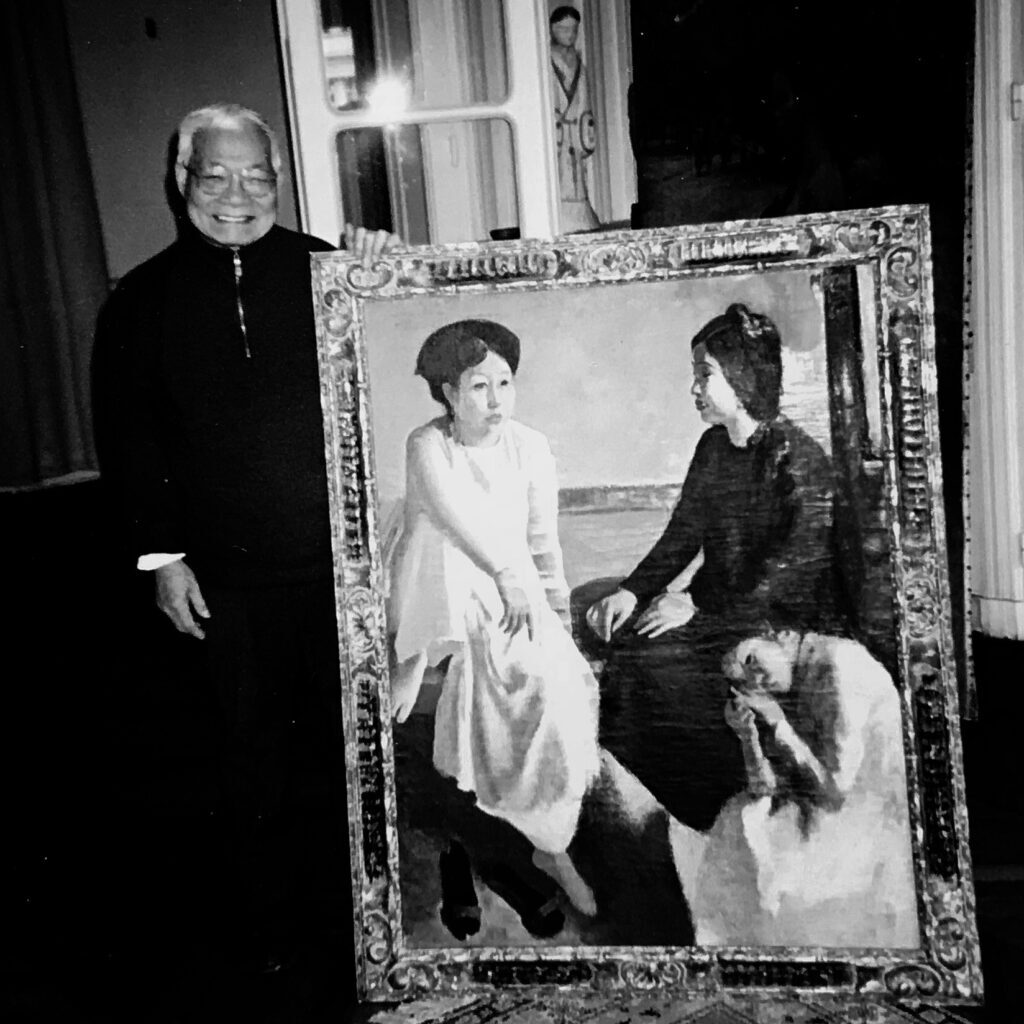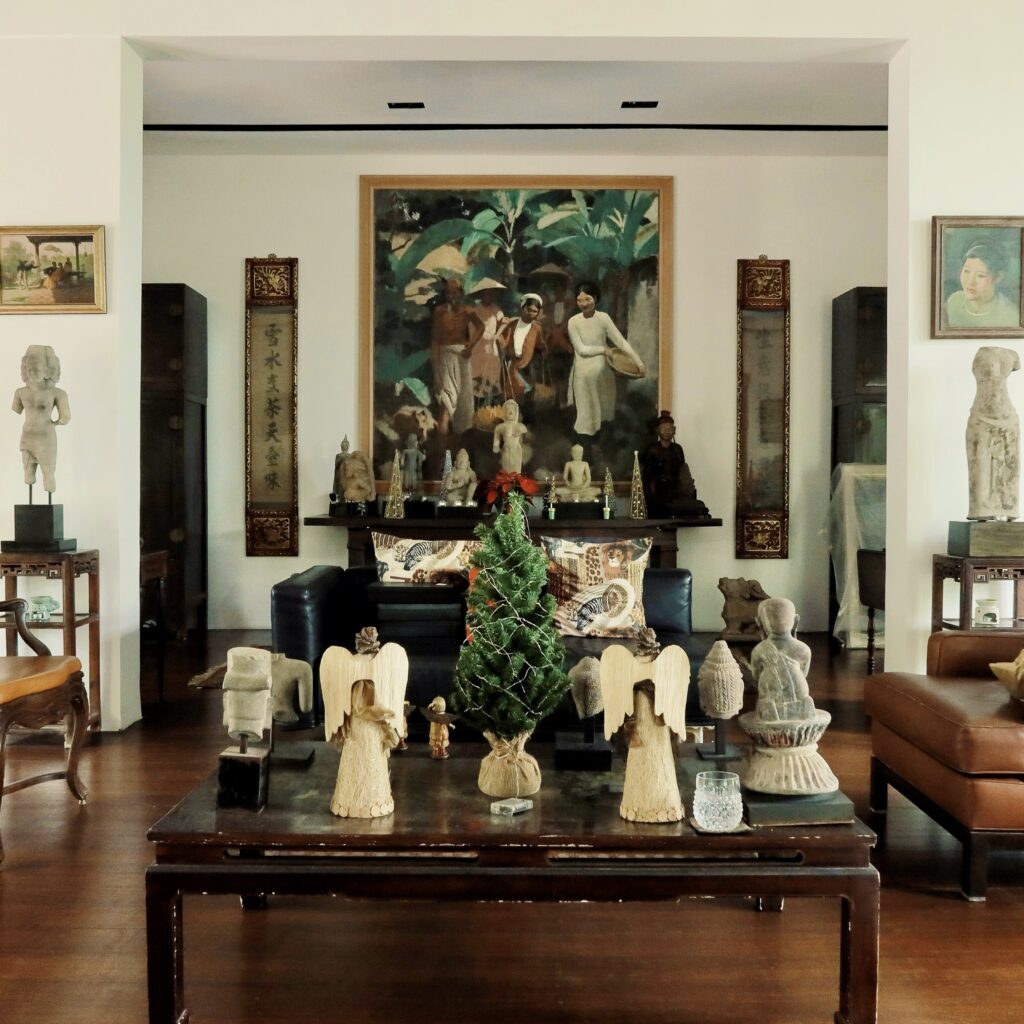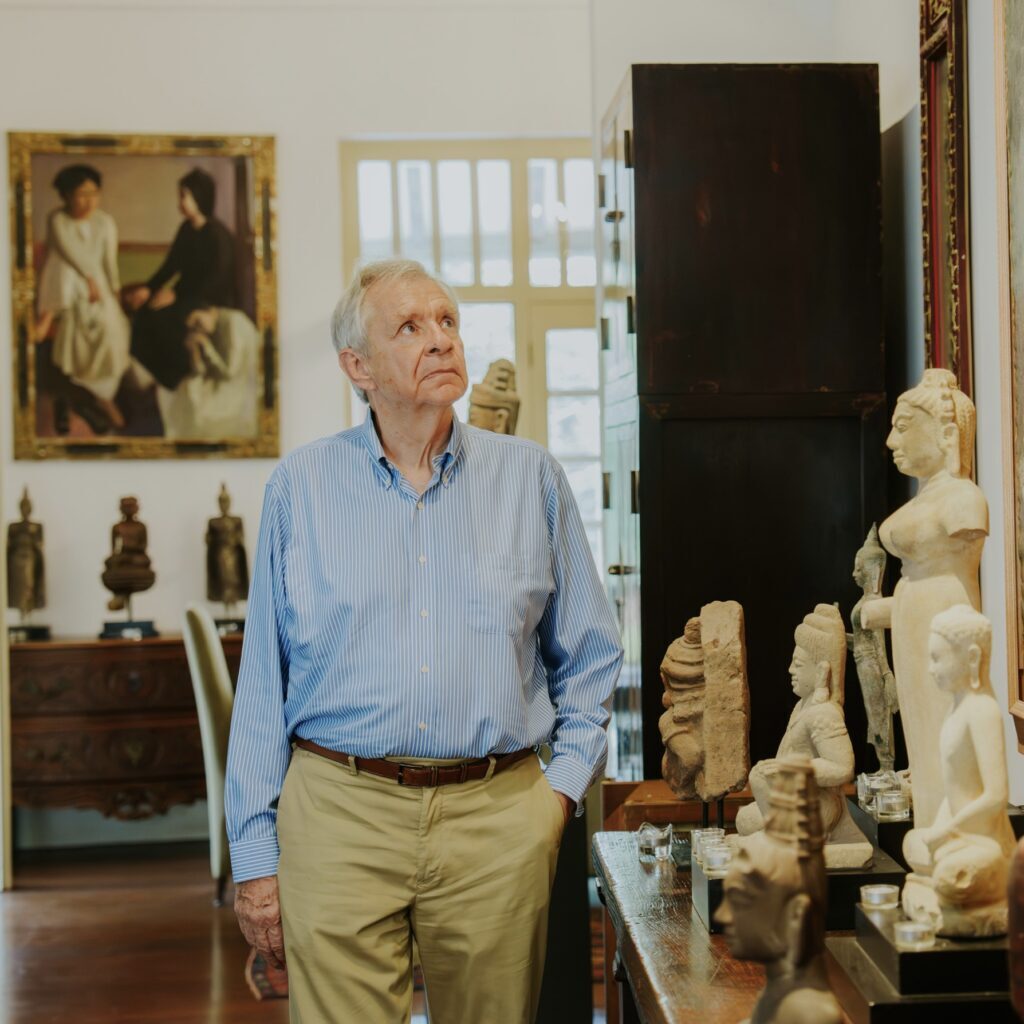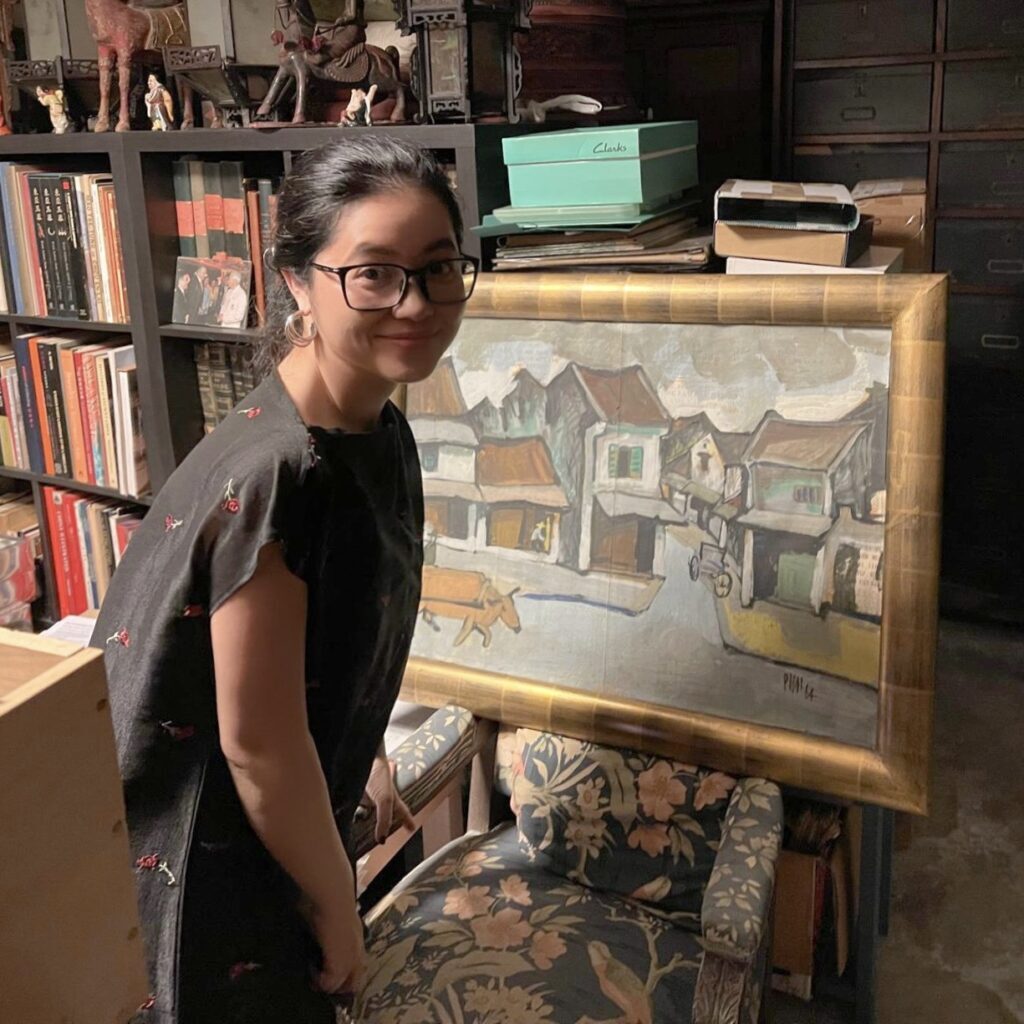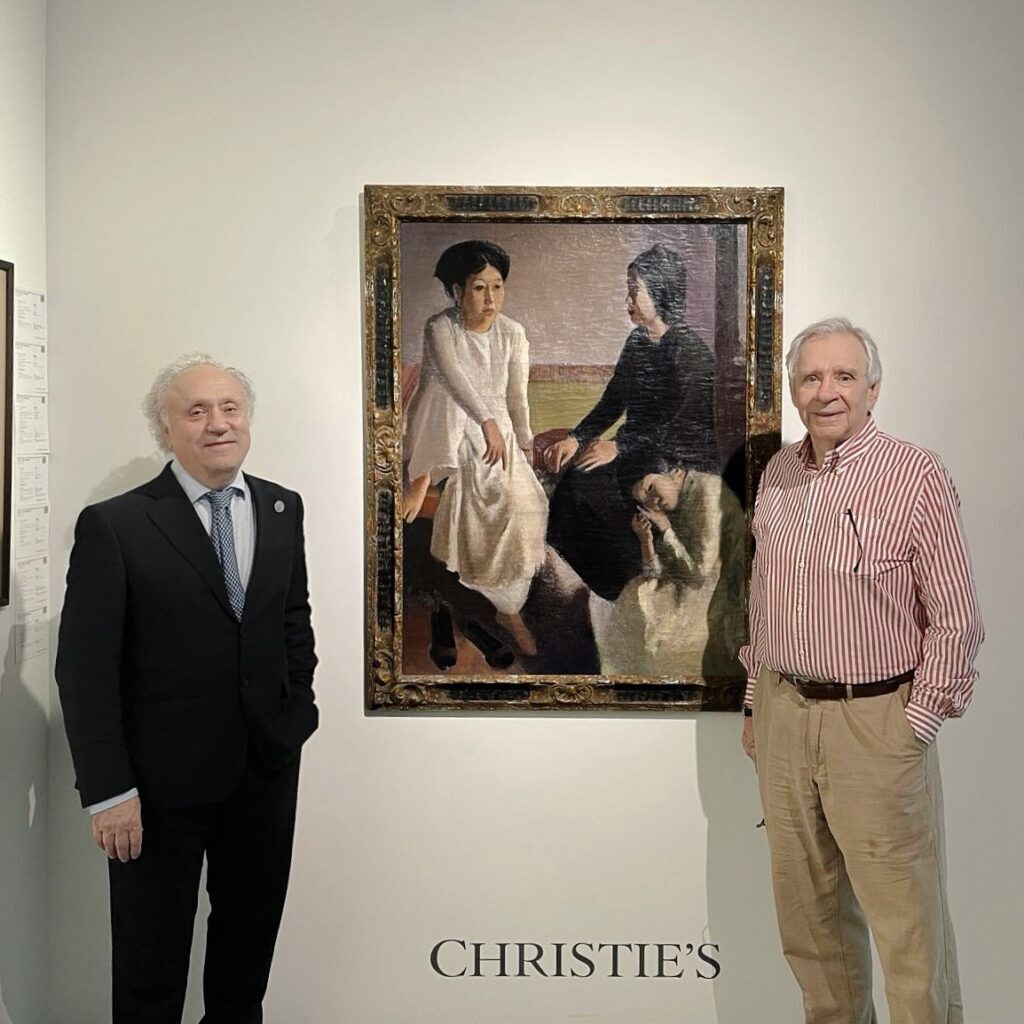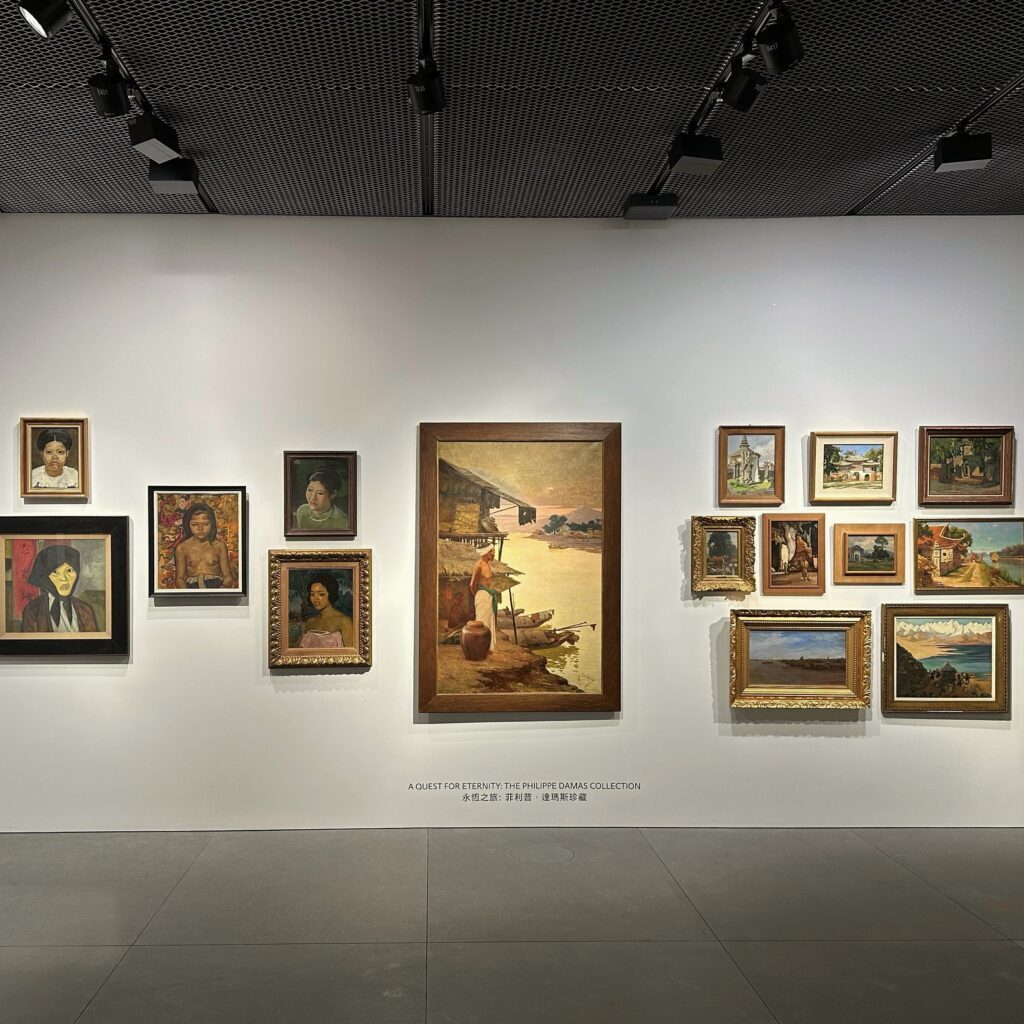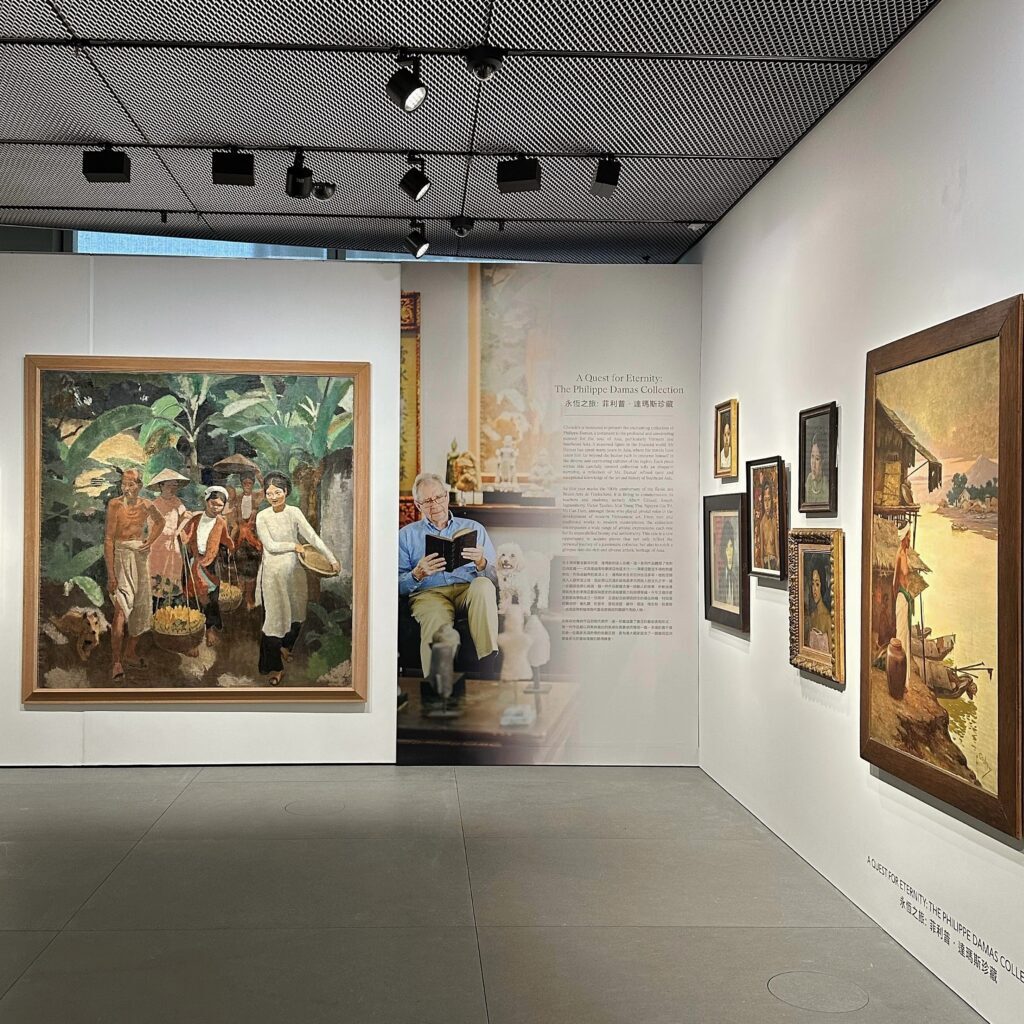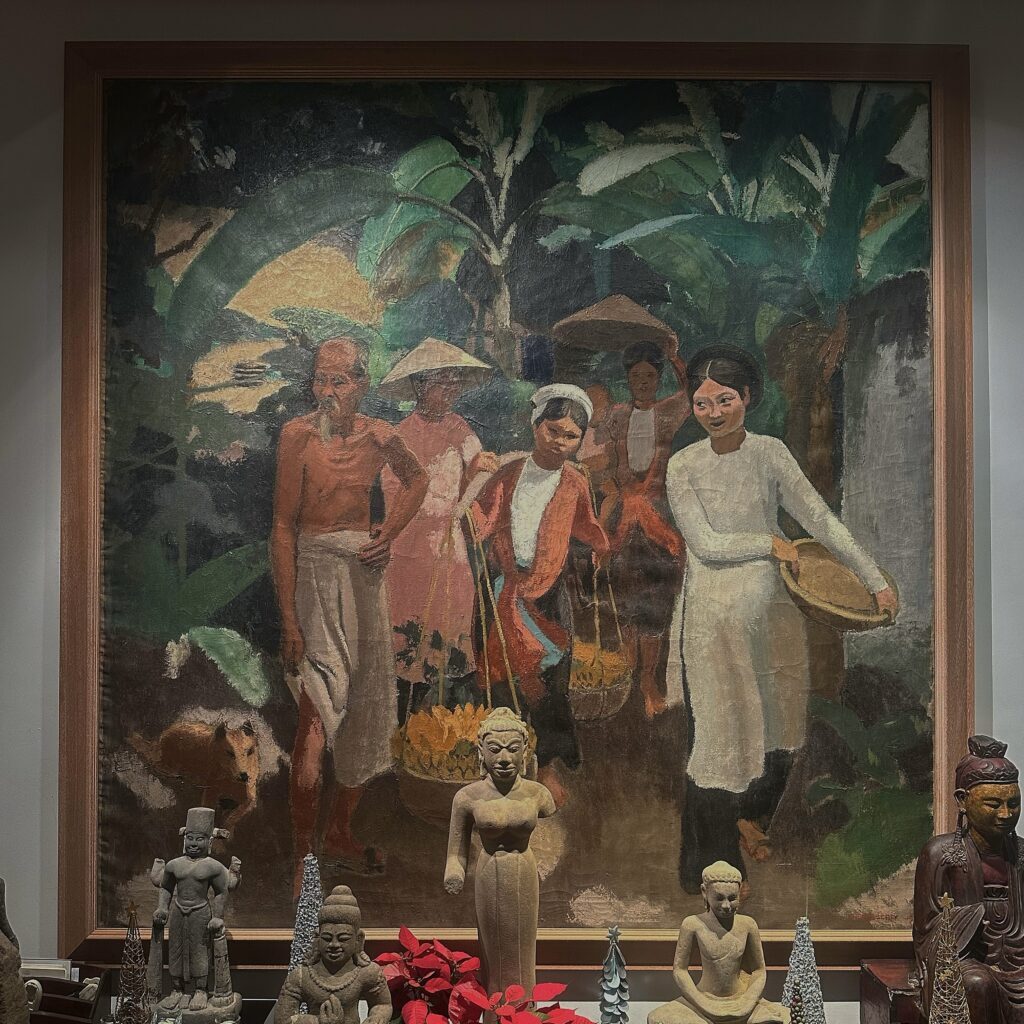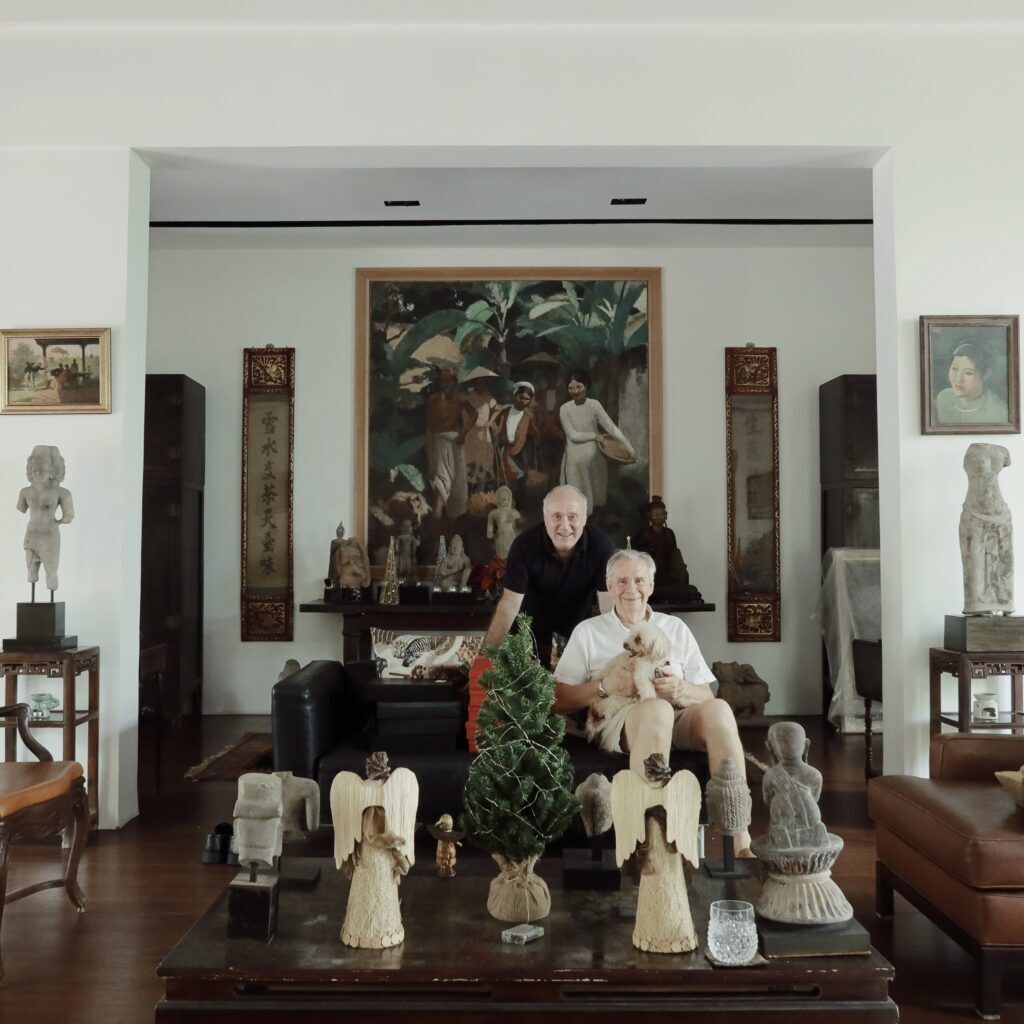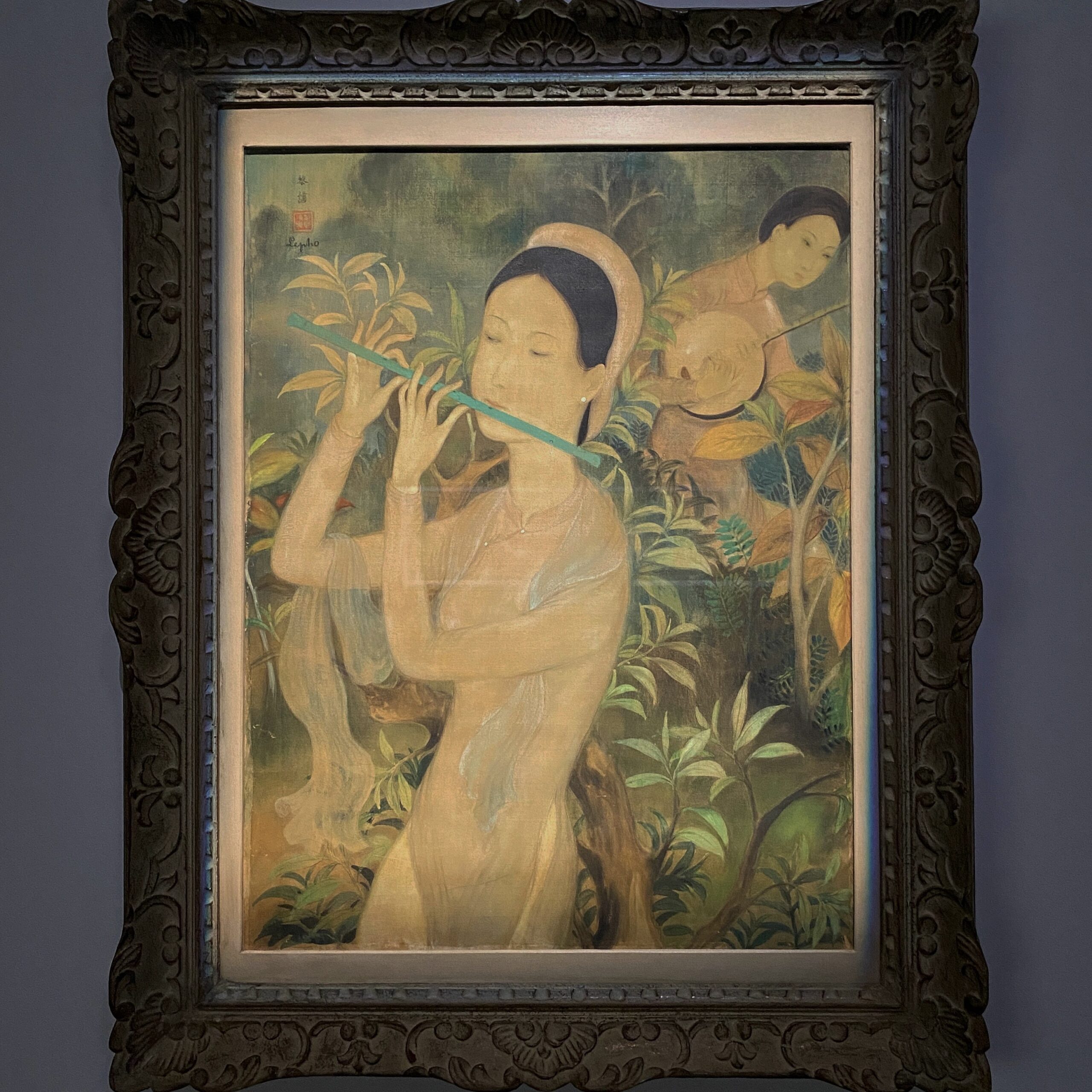
Le Pho (Vietnam/France, 1907-2001)
Les musiciens dans un jardin (Musicians in a Garden)
signed in Chinese, signed 'Le pho' (upper left)
ink and gouache on silk
72 x 54 cm. (28 3⁄8 x 21 1⁄4 in.)
Painted circa 1940
one seal of the artist
Estimate
HKD 5,000,000 – HKD 7,000,000
The work will be on the auction at Christie’s 20th and 21st Century Art on September 26th
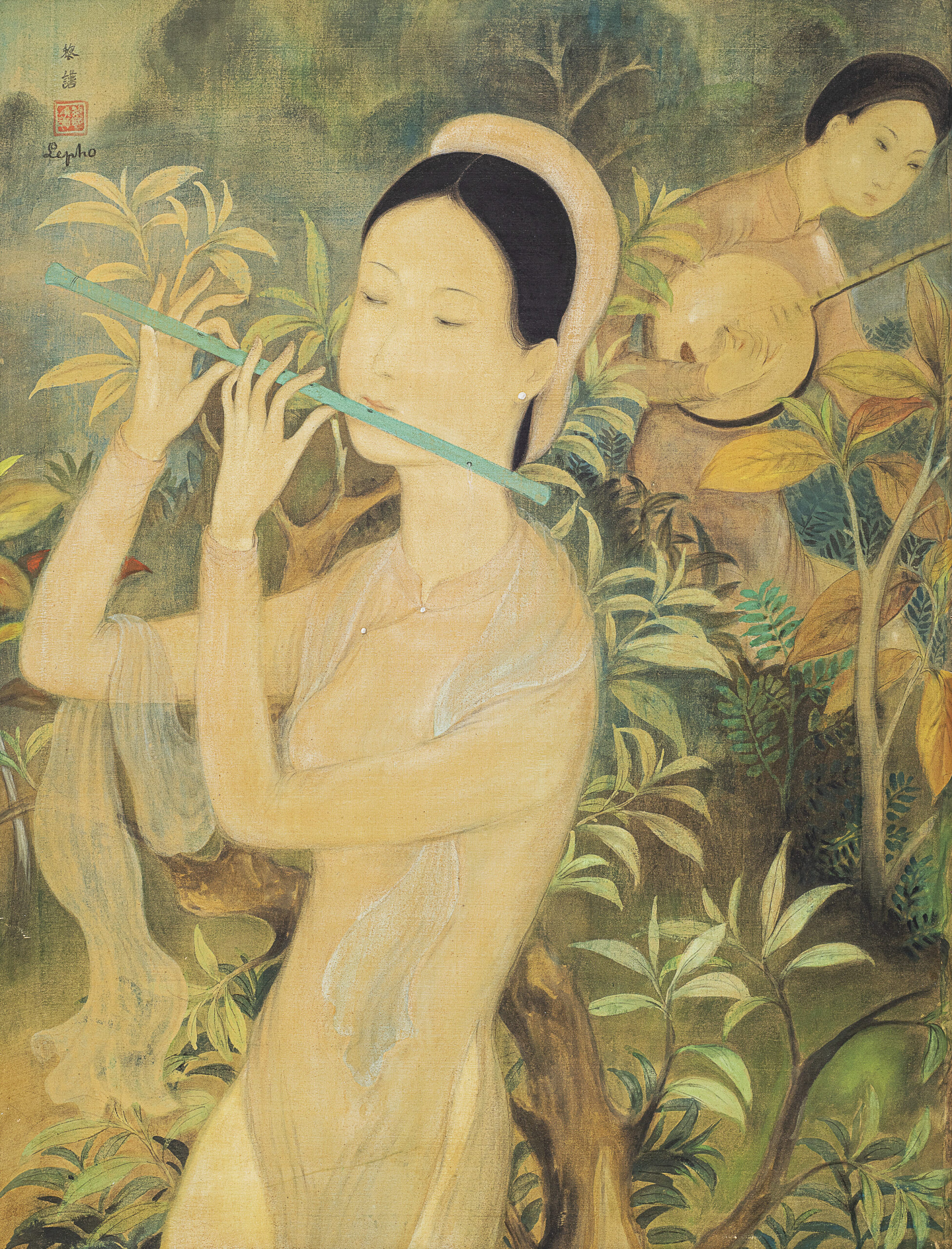
“LES MUSICIENS DANS UN JARDIN” (MUSICIANS IN A GARDEN), CIRCA 1940,
OR THE WISDOM OF ALLUSION VERSUS THE MILITANCY OF ILLUSION
In this delightful ink and gouache on silk of exceptional dimension, rare also for its subject, Le Pho offers us two Tonkinese musicians: a distinguished flutist and a young đàn nguyệt player.
On the reverse of the painting, a label from the famous framer “Paris American Art”, who was active in Paris from 1955 till 2013, testifies to the particular care taken by the collector to successfully frame our work.
In addition to her traditional Tonkin headdress, the young woman is wearing the ao dai reinterpreted in the 1930s by Nguyen Cat Tuong.
The subtle sensuality of the ochre-beige garment is enhanced by the diaphanous scarf that voluptuously embraces the young woman's body. A discreet pearly earring refers to the two buttons on the ao dai. Another original feature of this work is the particular care the painter takes to capture the grace of our musician's face. She breathes lightly into the flute she holds with her skillful, graceful hands, as if undulated by discreet layers of white gouache, which are also found on her face. A celebrated union of concentration and execution.
While the woman majestically occupies the centre of the composition, the đàn nguyệt player is offset to the far right, almost as if he was connected to a scene that would unfold without him. Only the notes of his instrument, bordered at the bottom by an assertive line of ink, contribute. The vegetation, which serves as a backdrop for the entire composition, supporting the young woman with a trunk while draping her in leaves, and becoming increasingly dense and dark, from left to right and from bottom to top, confirms this distancing.
In his silk, Le Pho uses soft colours, a technical privilege of gouache, structured by the inky black of the hair and of the đàn nguyệt.
The artist cuts his figures off mid-body, essentialising them as musicians, while stylising their instruments, even cutting off the one on the top right. The point he is making is that our musicians are playing music we will never hear.
Music is the art of sounds, sounds that combine better in time than in space, and that are part of a rhythm.
The two instruments depicted here have two different timbres. Yet the music performed would be recognisable even if the musicians played in isolation from each other. Gender, instrument, place, time: nothing matters, even if we may have a preference, as the artist shows by favouring here (as in all his work) this radiant woman. Different timbre, choice of melody or harmony, it does not matter, the composer's creation will be recognisable.
Le Pho reminds us that it's the work that counts, not the instrument of its construction, and that in painting - in complete contrast to music - composer and performer are one and the same.
Les musiciens dans un jardin thus conveys Le Pho's eternal quest for humanism, expressing his refusal of subjugated otherness, particularly in the year 1940 in the France he has lived in since 1937.
In his Aesthetic, Hegel saw the work of art as the sensible representation of the idea. He believed that music was more spiritual than painting, because it had “nothing extended or fixed," enabling it to express “the soul itself.”
But Le Pho, like his friends Mai Thu and Vu Cao Dam, or later Zao Wou-Ki and Chu Teh-Chun, shows that it is he, the artist, the voluntary self-exile, who no longer has anything extensive and fixed. So he is not spiritual. He is better. He is spirit. And this is the power of painting over music.
The wisdom of allusion versus the militancy of illusion.
Le Pho reminds us that painting can sing and music can evoke an image. But the only essential, irreplaceable instrument is the artist.
Wisdom of allusion: beneath his apparently wise art, he imposes nothing, only suggests.
Refusal of a militancy of illusion: far from a Vietnam in turmoil, in an anxious France, he advocates the painter, omnipotent, free of his destiny.
For him too, intuitively, “existence precedes essence”.
Jean-François Hubert
Senior Expert, Art of Vietnam

